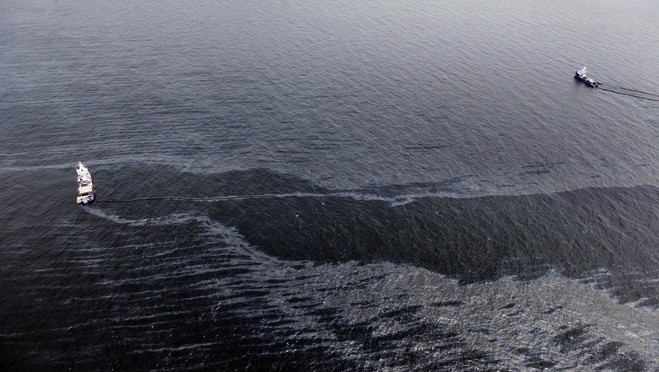Burning Oil in the Gulf of Mexico
The oil spill spreading in the Gulf of Mexico has reached a point approximately 20 miles off the coast of Louisiana; attempts to stop the leak at its source have so far failed. In response, a large portion of the surface oil will be contained and burned to avoid more harm to animals and the surrounding environment.

Officials have made it clear that this spill could be the worst in United States history if the leaking oil is not contained. At this point, the oil slick resulting from the spill has grown to 28,600 square miles according to a BBC News article.
The Deepwater Horizon oil rig experienced an explosion on March 20th that eventually led to its ultimate sinking and demise. Although over 100 rig workers were saved, 11 have gone missing and are presumed dead.
On Saturday, it was discovered that a leak in a pipeline 5,000 under the surface of the sea was leaking about 1,000 barrels of oil a day. That comes to about 42,000 gallons.
A risky plan was devised to stop the leak in a matter of days with a “blowout preventer,” but the device could not be activated. Alternative plans are prepared, including a dome that will guide the oil to the surface where it can be collected; that would require around 2 to 4 weeks to complete, but the procedure has only been done in shallower waters. A third option involves a intersecting well and would take 2 to 3 months.
The controlled burn taking place today will involve a series of short burnings of contained amounts of oil. Each burn will destroy several thousands of gallons of oil.
Even though the fumes from the burning oil could disorient and harm the local wildlife, the potential dangers of an oil slick are much worse. Authorities report that the animals near the oil slick will have a better chance of avoiding smoke and fire than an oil slick.
The wetlands of the Louisiana coast provide homes and habitats of an incredible number of unique birds and animals; preventing the oil slick from reaching this coast is key.
Reports suggest that the oil slick should not reach the Louisiana coast by Saturday, but weather reports can be wrong. Hopefully, with the new burning strategy and new strategies to stop the leak, the one-of-a-kind coastal environment near the spill and the wildlife within it will remain unharmed.

Leave a Reply